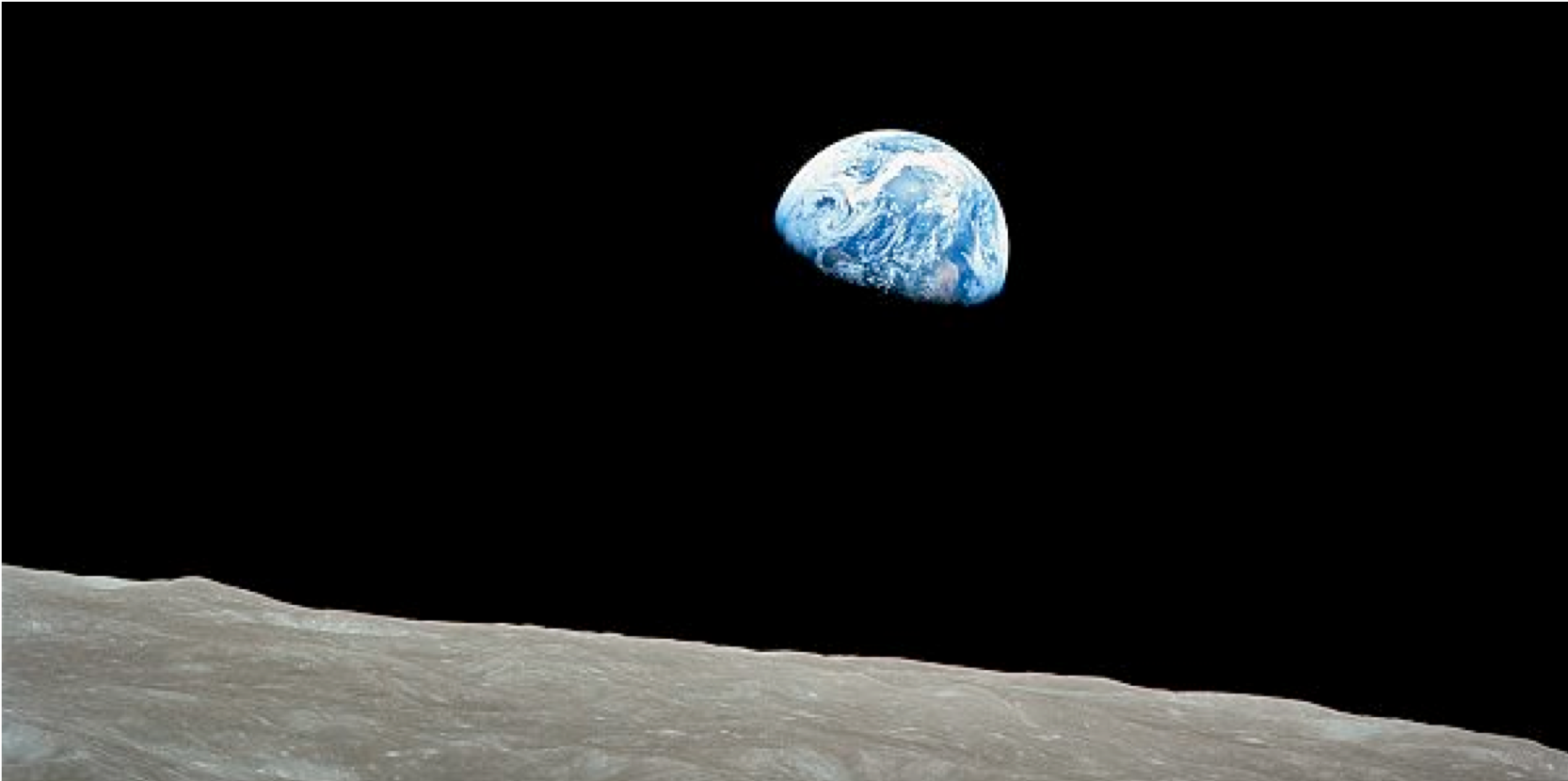
Forty three years ago on Christmas Eve, three men from Houston’s NASA Manned Space Flight Center became the first to see the whole face of earth, an seemingly obvious but yet strangely unanticipated discovery, that we were all changed by.

In 1968, Apollo 8 was the first manned space flight mission to the Moon, and although it was intended as the first of several stepping stone missions for later landings there, what was not expected was that it would introduce us to ourselves and cause a level of introspection not seen in generations.
Although we had been sending men into space for several years already, none had been far enough above the earth to see its entirety. But now outside of the Earth’s orbit, the space crew of Frank Borman, Bill Anders, and Jim Lovell, looked up from their busy duty roster, of photographing the lunar surface, and were confronted with something that amazingly was not even considered on their mission checklist.
As Bill Anderson recounts,
“We’d spent all our time on Earth training about how to study the moon, how to go to the moon; it was very lunar orientated. And yet when I looked up and saw the Earth coming up on this very stark, beat up lunar horizon, an Earth that was the only color that we could see, a very fragile looking Earth, a very delicate looking Earth, I was immediately almost overcome by the thought that here we came all this way to the moon, and yet the most significant thing we’re seeing is our own home planet, the Earth.”
And the images brought back to Earth similarly inspired our poets and philosophers, perhaps most famously Archibald MacLeish who at that time in a New York Times essay summed up the experiences with the following:
“To see the earth as it truly is, small and blue and beautiful in that eternal silence where it floats, is to see ourselves as riders on the earth together, brothers on that bright loveliness in the eternal cold — brothers who know now they are truly brothers.”
Several weeks after that discovery a new and prescient movement focused on the Earth seemed to be forming. And indeed the very first Earth Day would commence later that following spring.
For us today, after two generations have come into the world accustomed to some version of this image, it still is astonishing to hear that modern astronauts are as awed by the visage of the Earth when they get to see it for themselves from orbit. And although we cannot all go into space just yet, at least one of today’s astronauts, Ron Garan, hopes to find ways to give us all that perspective so we can better work on the challenges we have on the ground.
Garan gained his own version of this perspective from his first space flight in 2008. And in 2011, just as he was beginning his second mission to space as part of an International Space Station crew, he launched a website called Fragile Oasis to try to inspire and inform others. Now having just returned a few months ago to Earth, Garan’s wish, which he outlined recently in the Atlantic magazine, is being personified also through the Collaboration Project, which has been further inspired by the model set forth in the International Space Station.
Simply stated, if over 20 nations could find a way to come together for the ISS, why not find ways to bring 7 billion Earthly crewmembers (and an estimated 20 million good organizations and causes) together back on the surface to better address the many problems and challenges we face on the ground.
A few weekends ago a few groups around the country, including a high-tech collaboration of major IT firms known as RHoK (Random Hacks of Kindness), NASA and USAID began looking at ways to build maps and collaboration technologies for that purpose. Its a daunting task, as others have found out before, but one that is necessary and likely possible as technology advances, and succeeding generations grow-up with images of the Earth, as seen in full, as a common experience.
We look forward to covering more on this project in the future.
